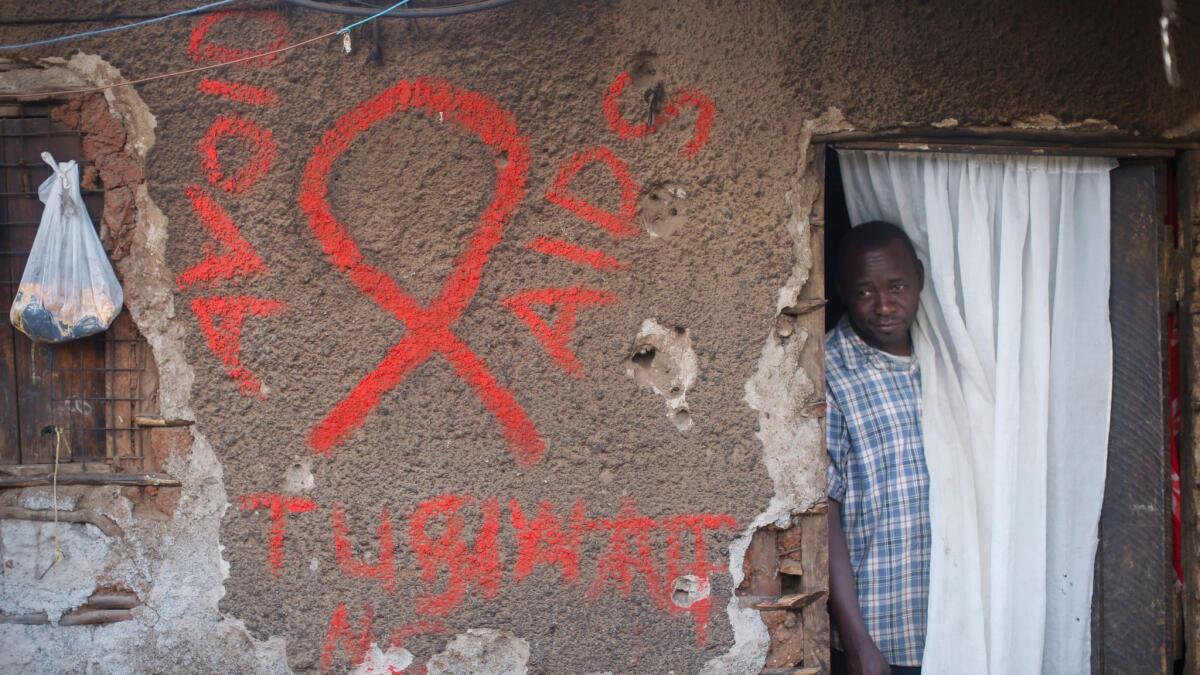AIDS deaths are on the decline thanks to medications. But increasing drug resistance poses a danger
- Share via
The world has made major progress in the fight against
The latest statistics came out this week in two reports, one by the United Nations AIDS agency, the other by the World Health Organization.
Here’s the epidemic today, by the numbers:
36.7 million
The number of people with HIV worldwide. This figure is up from 36.1 million in 2015, largely because of the success in transforming the virus from a death sentence into a manageable illness.
19.5 million
The number of people on anti-retroviral drugs used to suppress the HIV virus. The figure, up from 17.1 million in 2015, represents 53% of those infected.
1 million
The number of AIDS-related deaths last year. This figure is down from 1.9 million in 2005, a 47% decline.
1.8 million
The number of new HIV infections last year. That figure is down 16% since 2010. One big factor driving new infections: People ages 15 to 24 are lagging behind the rest of the population when it comes to knowledge of HIV and testing, treatment and prevention. In addition, men are less likely than women to know their HIV status or start treatment.
19.4 million
The number of people with HIV in eastern and southern Africa, the places hardest hit by the epidemic. That’s 53% of all infections worldwide.
11.7 million
The number of people on antiretroviral drugs in eastern and southern Africa. That figure, up from 10.3 million in 2015, represents 60% of those who are infected, a rate that’s higher than the world average.

420,000
The number of AIDS-related deaths in eastern and southern Africa last year. That figure, which represents 42% of the deaths worldwide, is down 42% since 2010.
790,000
The number of new HIV infections in eastern and southern Africa last year. That figure, which represents 44% of new infections worldwide, is down 29% since 2010.
11,000
The number of AIDS-related deaths in the Middle East and North Africa last year. That figure is up 19% since 2010. Deaths also rose substantially in Eastern Europe and Central Asia.
7
The number of countries that have met the U.N.’s “90-90-90” goal: 90% of all people with HIV know they are infected, with 90% of those taking sustained antiretroviral therapy, with 90% of those achieving suppression of the virus. The countries are Botswana, Cambodia, Denmark, Iceland, Singapore, Sweden and Britain. The aim is that the world will achieve those marks by 2020.
26 billion
The estimated number of dollars needed to reach the 90-90-90 goal by 2020. According UNAIDS, there is currently a $7-billion shortfall.
6
The number of countries — of the 10 that were part of a study on resistance in Africa, Asia and Latin America — in which more than 10% of people starting antiretroviral therapies have HIV strains that are resistant to the most widely use medicines.
135,000
The number of additional AIDS-related deaths the world would see over the next five years if no progress is made against curbing drug resistance. Unchecked resistance would also lead to additional 105,000 infections, because when treatment fails to suppress the virus, the patient is more likely to infect other people.
650 million
The number of dollars by which HIV treatment costs could increase in the next five years if no action is taken to combat the trend of resistance. The cost the HIV response is expected to peak to around $26.2 billion in 2020.
For more on global development news, see our Global Development Watch page, and follow me @AMSimmons1 on Twitter
Sign up for Essential California
The most important California stories and recommendations in your inbox every morning.
You may occasionally receive promotional content from the Los Angeles Times.








